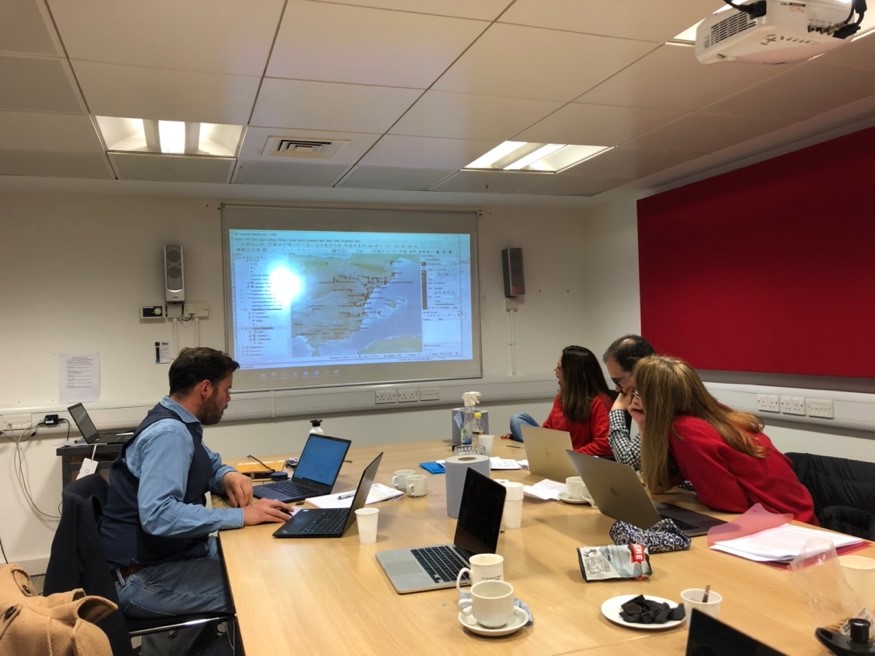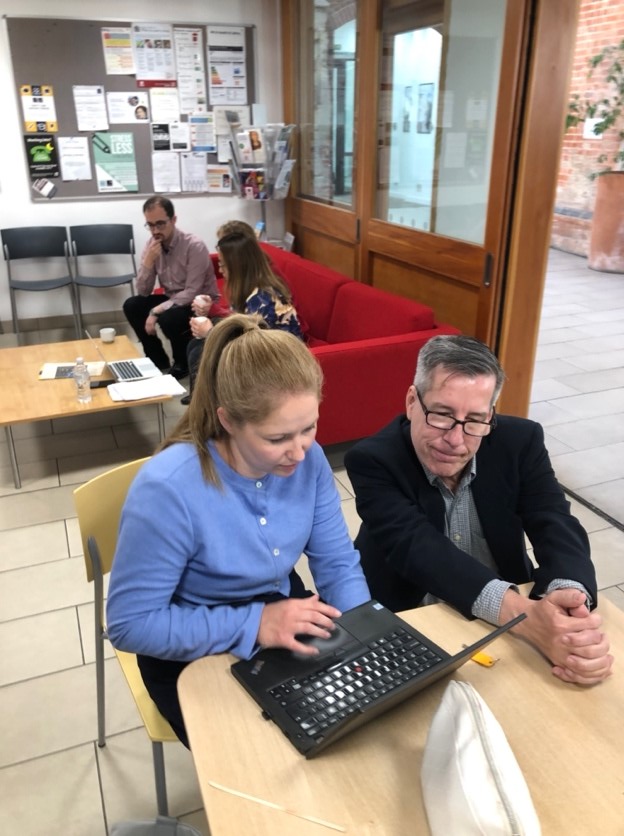By Anna Willi

In March 2020, Simona, Pieter and I met in London for one of our team meetings, with Alex joining us on video call because she had a baby and there was talk of a new virus. The three of us went for dinner and drinks at the end of the day, and we vividly remember the moment we said goodbye because we laughed about our silly ‘COVID handshakes’. Little did we know… Since then I have bumped into Simona in the courtyard of the Senate House, each clutching to our laptops, during a fire alarm that forced us to go for a coffee and a catch-up. Alex and I also met Scott to shoot our conversation about Roman writing equipment, and I have seen Pieter on screen for coffees, team meetings and study sessions. But in March 2020 we never thought it would be so long before we were, as an extended team, all in the same place.
Now we are adapting to a less restricted lifestyle and this month marked a very special occasion indeed, as we all met up together in Oxford for the first time in years, including extended team members that flew in from Spain, the Netherlands and the US.

Having updated each other about the numerous LatinNow babies, and grand-babies, we all immediately realised how helpful it is to be working together in the same room, to have time to mull over things and dip in and out of conversations over the course of hours and days. The main reason for the meeting was the joint volume we are currently working on, with each of us writing chapters on Latinization, local languages and literacies in our respective geographical areas of research. It has been really useful to discuss our draft chapters to identify common themes, bounce problems off each other and make sure we cover important aspects without overlapping too much – linguistic developments did not stick to Roman province boundaries and historic periods, after all! This was particularly important for Pieter, Noemi, Maria José and Javier, who are all writing about the Iberian Peninsula, an area with multiple pre-Roman local epigraphies.

Getting together also had the advantage that we could all sit around a big screen and have a play with our data. We are also currently working on a WebGIS that will be made publicly accessible later this year. It will allow users to visualise our epigraphic dataset against the backdrop of a map and to add other features such as roads, production centres, settlements and province boundaries, to contextualise it with factors that played a role in the spread of Latin. It will also be possible to filter our epigraphic dataset and for example display inscriptions on stone, non-Latin inscriptions or only funerary inscriptions together with these different factors. Scott, Simona and Pieter in particular have worked hard on our data and we have refined it to the point where it might even allow us to rethink our knowledge about Latin stone inscriptions more generally, but that is a topic for another blog… All of us are making use of the epigraphic dataset for our chapters, so it was really helpful to display on a large screen what we have been turning around in our heads, to play with different sets and to identify data we can improve or would like to add: why are there several lapidary inscriptions in Brittany? Isn’t that a really anepigraphic zone? Zoom in, add the layer for Roman roads, boom: they’re all milestones! Can we add the locations of mints/mining? As it turns out, coin legends are amongst the earliest evidence for Latin literacy in many of our areas. Which of the existing datasets has the most accurate information on settlements? And what are those dots in the ocean? Careful not to dismiss them as dump sites for inscriptions without coordinates (we’ve been very careful to consider that throughout the data cleaning process), Porcupine Bank is real! Discussion often started at the breakfast table and continued all day and into the evening as we wanted to make the most of our time together. It was hard to get a break in! (Shout out to the staff at a certain Pizza restaurant that let three of us hold down a table for eight for almost an hour whilst half the group couldn’t tear themselves away from the mapping! We did order olives, though…)

After three days of intense teamwork, the week ended with the Spring colloquium of the British Epigraphy Society, which was held in memory of Jim Adams, one of our project Special Advisors, at the CSAD. The speakers (including our own Alex and MJ) took us on a tour of exciting projects that were inspired by Adams’ ground-breaking work, from Spain and the northwestern Roman provinces to Illinois, Egypt and Pompeii, exploring regional and social linguistic diversity, translation techniques and even the vocabulary of bodily functions. It was wonderful to see how Adams’ work is being developed further and taken in new directions; his legacy truly lives on, and LatinNow is proof of it.